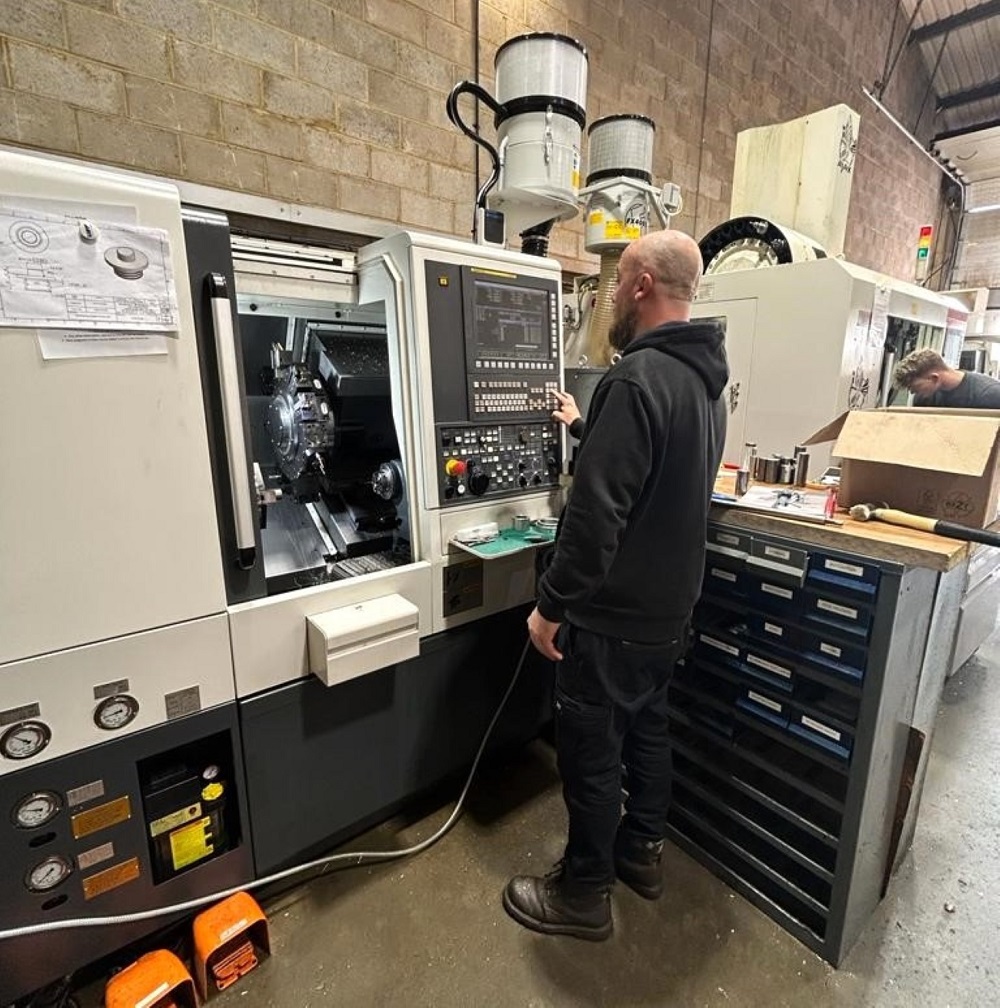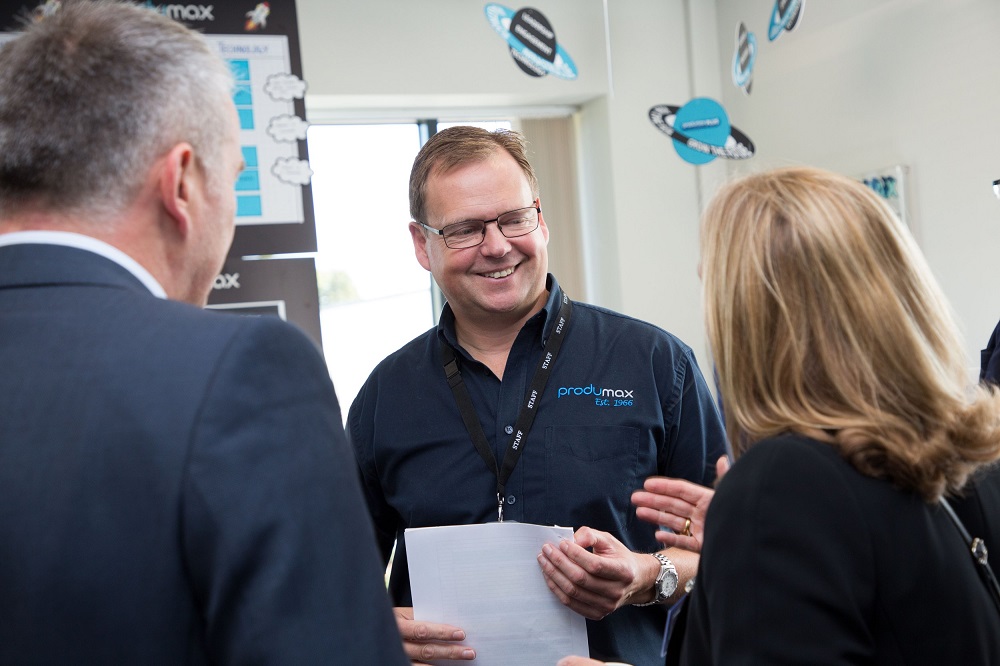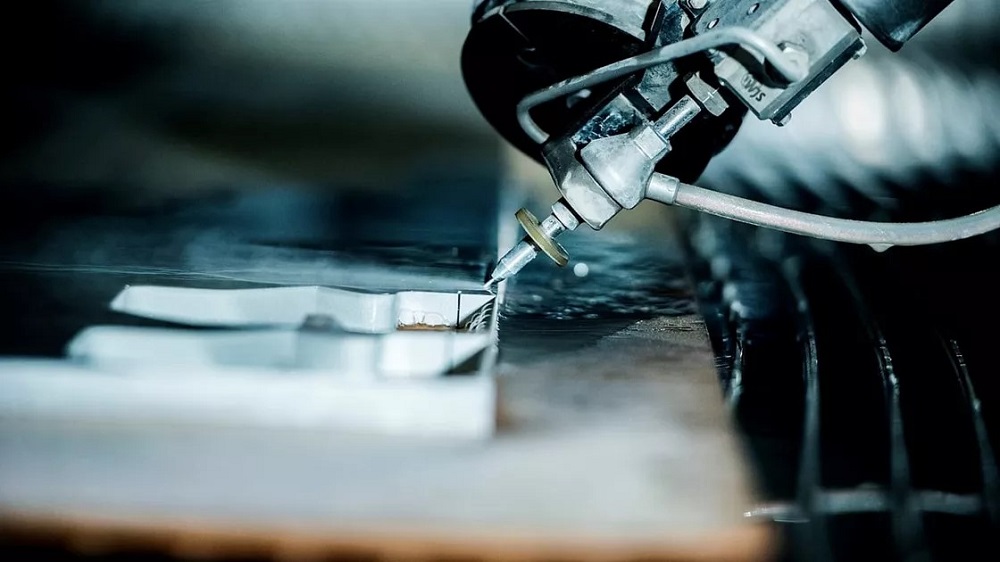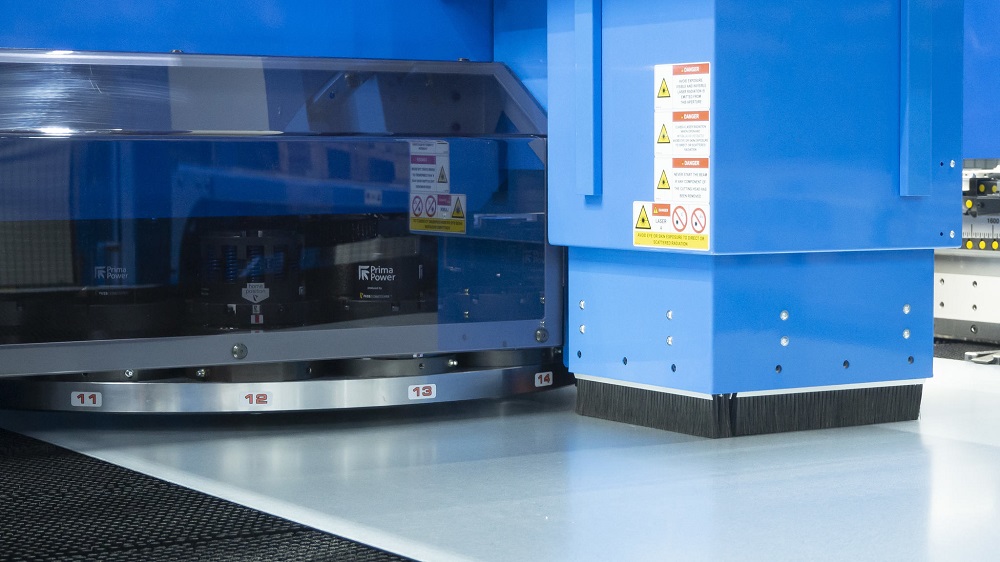As a company that has been in business for more than half a century, BD Precision Engineers has certainly established its track record of providing high-quality precision-manufactured components. Machining anything from prototypes to production runs in the thousands, the Bedfordshire-based company has recently invested in a Nakamura-Tome AS200MYF turn-mill centre from the Engineering Technology Group (ETG).
The arrival of the Nakamura-Tome AS200MYF with a 1m Samsysbarfeed demonstrates the Leighton Buzzard company’s philosophy of continued investment in new plant and machinery. As the manufacturer’s largest single investment in machinery to date, the AS200MYF marks a step forward in the type of machining processes the ISO9001-accredited business can now offer, while also increasing its capacity.
As a business passed down the family, managing director Andrew Fogden and his wife Debbie now own BD Precision. Since Andrew joined the family business in the late 1980s, it has shifted from being a small subcontract machine shop with a handful of manual mills, drills and a surface grinder, to a full CNC facility with the Nakamura-Tome turn-mill centre taking centre stage.
BD Precision has long- been a milling facility with just two CNC turning centres. However, the nine-employee company recognised that one two-axis turning centre was doing much of the turning work, producing small batches and production runs up to a few hundred with the second machine operating as a ‘jobbing’ lathe. With the primary turning centre at full capacity and the company transferring a lot of turning work to the prismatic department for secondary operations, the company needed both capacity and capability.
Recalling the decision to purchase a new turning centre, Andrew says: “As a company that operates a 10-hour day shift, our two-axis turning centre was running non-stop and any downtime would create serious capacity issues for our business. We produce a lot of mast-climbing rollers for the construction industry and these almost fill our turning capacity. As a result,weneeded a solution to alleviate capacity and support growth. We looked at four different machine tool vendors for a compact CNC turning centre that would fit into a limited floor area.”
BD Precision did not want to sell any of its existing machines and space was particularly tight. Despite the limited available floor area, the company wanted a machine that was going to give its business an extra dimension. The Nakamura-Tome AS200MYF was the solution.
The business manufactures a complete variety of work for the aerospace, defence, rail, scientific and laboratory sectors, as well as the construction and automotive industries. To facilitate the variety of materials, tight dimensional tolerances and the complexity of parts going through the turning department, a large envelope machine with Y-axis milling and a small footprint was a must.
“Out of the machines we looked at, the Nakamura was by far the best machine,” says Andrew.“It has a 65mm bar capacity with a maximum workpiece length of up to 300mm and a distance between centres of 427mm, giving us all the capacity we needed. Additionally, the specification versus cost made the Nakamura a ‘hands-down’ winner.When you add in the impeccable reputation of the Nakamura brand, it was a no-brainer.”
As soon as the AS200MYF landed in April 2023, there was an initial bedding-in period before the machine made an impact.
“We needed to get a CAM system to run the Nakamura, so we invested in ONE CNC,” he explains.“Furthermore, the machine has a FANUC CNC and most of our machines are Heidenhain. Despite the transition to a new CAM system and CNC on a completely new machine configuration, the impact of the AS200MYF after the initial learning curve has been tremendous.”
Discussing the productivity benefits of the Nakamura-Tome machine, Andrew continues: “Its’ at least 40% more productive than our existing turning centres, and that’s during our learning curve. We’ll increase our productivity rates, the more we become familiar with the machine. Another major benefit has come from Y-axis milling. We can get parts off the machine in one hit, whereas previously we had to transfer a lot of parts to our milling department for secondary finishing. The capacity the Nakamura has created in our milling department is incredible.”
The Y-axis milling facility on the Nakamura-Tome has virtually eliminated all secondary finishing operations in the milling department and opened new opportunities for BD Precision.
“We manufacture a lot of turned parts that require cross-drilling and milling,” says Andrew.“Here, the Nakamura has completely eliminated the need for secondary operations. This ability to complete jobs in one hit has enabled us to compete for and win new business that we knew we couldn’t previously complete. We’ve also won new business based on our ability to compete on both short lead times and price. There’s one project we’ve won that requires the machining of complex-shaped flanges with holes on a PCD. Previously, we could have done it in 2-ops, on a lathe then a mill, but we wouldn’t be cost-competitive. With the Nakamura, we have won the order and our impressive cycle times and competitive pricing will lead to additional work with this new customer.”
With more work completed in one hit on the Nakamura, the opportunity for error has reduced.
“One-hit machining has eliminated any opportunity for deviation and error in our batch production, considerably improving our overall quality,” he says.“Furthermore, the stability and rigidity of the Nakamura have improved our surface finishes. The tooling turret on our existing turning centre is a VDI configuration and the Nakamura has a BMT tooling turret which is far more rigid and stable.The surface finishes on the AS200 are far superior toanything we’ve seen before. This is also making a marked improvement on our tool life.
“The Nakamura-Tome AS200 has improved our quality no-end, while our productivity, capability and throughput have also improved considerably,” concludes Andrew.“We’re absolutely delighted we bought the Nakamura from ETG. The machine is a ‘door opener’ for our business and, as we open more doors, we’ll certainly be looking for further high-end machine tool investments like the Nakamura.”
For further information www.engtechgroup.com



















